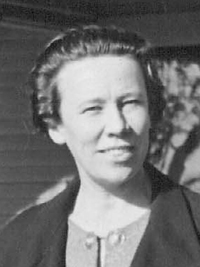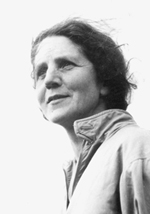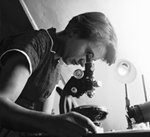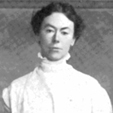Pioneers: Women Plant Pathologist
One sunny day I was wondering through the wide fields of mustard. Scenery was great, I felt like heaven. The smell of the mustard was passing through whispering my skin. Then one thought come upon to me. Do plants have any feelings? Do plants suffer like human, etc.etc? It was quite obvious as living things plants may too feel pain but till the date no one knows how the plants really feel. website traffic . Plants acquire diseases. I have heard and seen lots of epidemic that destroy tons of food and cash crop all over the world. I have seen farmers complaining about the lesser yields of crops. Many scientists are working in the field of plant pathology. It is a science that studies plant disease and attempts to improve the chances for survival of plants when they are faced with unfavorable environmental conditions that cause disease. The concept of plant and plant disease is old and long. Moreover, in this new era it also involves the molecular understanding of disease agents like bacteria, fungi, virus and insects. It deals with study of pathogenicity, bio control mechanism and genes responsible for this activity. It really covers the vast area. What really seize my interest was to know about the pioneer women plant pathologist who has contributed a lot as their male counterparts. Their hard work, determination and strong will power has led to the new, interesting field of plant pathology. Their bibliography would certainly encourage not only the enthusiastic young women but also the energetic young generation. I have attached the excerpt from the book “Pioneering women in plant pathology” as per written (without any modification) describing few early women plant pathologist among many. This short note is to honor all women scientist all over the world who is dedicated to the work for developing better world where everyone can live in peace and harmony.
1. Katherine Esau (1898–1997 )
)
A Dedicated Teacher, Plant Virologist, and Anatomist
Jennifer Thorsch
Katherine Esau immigrated to the United States after the turmoil of revolution in Russia and settled in California. With hard work and determination, she found employment in the 1920s in agriculture with the Spreckles Sugar Company in California, where she worked on the development of resistance to curly top virus in sugar beet. Her work caught the attention of the chair of the Botany Division of the University Farms in Davis, California, then a division of the University of California, Berkeley. She was recruited to a university position and ultimately obtained a Ph.D. degree in 1931, working on the anatomical changes in beet tissue in response to curly top virus infection. She was one of the first women hired on the faculty of the University of California, Davis. Her interest in plant anatomy stemmed from her work on plant virus movement in phloem tissue. Her detailed photomicroscopy work was among the first to document the physical movement of viruses in phloem tissue. Esau studied plant viral movement and infection and the impact on plant anatomy using beet curly top, beet yellows, beet western yellows mosaic, and barley yellow dwarf in the family Poaceae; yellow leafroll of peach in celery; and Pierce’s disease of grape, among others, as model systems. Notably she became the world’s foremost plant anatomist over her 64-year career. She received high accolades for her work, including membership in the prestigious National Academy of Sciences and the President’s National Medal of Science for her work on plant structure and development. Her many classic textbooks, including Plant Anatomy, are still in use today in botany classes across the United States.
2. Mary Dilys Glynne (1895–1991)
 Cereal Disease Pathologist and First Woman Plant Pathologist Hired at Rothamsted
Cereal Disease Pathologist and First Woman Plant Pathologist Hired at Rothamsted
Geoffrey A. Salt
Mary Dilys Glynne was a research plant pathologist in the Plant Pathology Department at the Rothamsted Experimental Station soon after graduating with a B.Sc. degree from the University of Wales, Bangor. She began her career at Rothamsted in August 1917 as an assistant botanist under the guidance of the first woman scientist hired at Rothamsted, Winifred Brenchley. Glynne became one of the original members of the newly formed Mycology Department in 1918. She spent 43 years at Rothamsted, working mostly on soilborne and foliar diseases of cereals. The University of Wales awarded her an M.Sc. degree in 1922 for her work on wart disease of potatoes and a D.Sc. degree in 1943 for her work on eyespot disease of wheat. She is best known for her work on take-all decline and eyespot of wheat. She was elected a fellow of the Institute of Biology, and in 1960, she was honored with the Order of the British Empire for her services to agriculture. time now . She retired in November 1960 but returned to Rothamsted on a voluntary basis for another 2 years and then continued writing from her home, publishing her final paper in 1985 when she was 90. She was also a renowned climber and was one of the first women to scale mountains such as Fujiyama and the Matterhorn.
3. Rosalind Franklin (1920–1958)
 Pioneer in Plant Virus Structure Research
Pioneer in Plant Virus Structure Research
Sue A. Tolin
Rosalind Franklin made significant contributions to the science of plant pathology, notably on the structure of Tobacco mosaic virus (TMV). In approximately 4 years of work on virus structure, she published 16 papers until (and after) her premature death from cancer. She is better known historically for her X-ray crystallography of DNA and the controversial use of her unpublished pictures by Maurice Wilkins, James Watson, and Francis Crick to build their double helix model of DNA (41,48–50,52,53). The negative image of her portrayed by Watson in his classic book The Double Helix (60) was later retracted and she became friends and colleagues of both Watson and Crick. Ann Sayre, a longtime friend of Franklin, wrote an excellent biography, portraying personal information of what it was like to be a gifted woman in a competitive scientific race dominated by males (53). Sayre remarks that the words of Watson compelled her to “set the record” straight by writing a biography of Franklin. Franklin’s life was revisited by B. Maddox in 2002 (48), bringing additional information to light about the woman who became known as the “Dark Lady of DNA”. Maddox also presents a complete picture of Franklin’s career, including her work on virus structure. Recently, other science historians have begun to recognize that Franklin made major contributions to our understanding of the structural biology of viruses, in addition to her work on DNA structure (8,51). Franklin was invited to present her research at the 50th anniversary of The American Phytopathological Society (APS) in August 1958, which would have been her first presentation at a plant pathology meeting. Her untimely death occurred 4 months prior to the APS meeting, at the age of 37. Franklin’s work was represented in the commemorative volume from the meeting in an article written by Donald Caspar and Aaron Klug, in which they designated her as senior author (38). Notably, she was the only woman on the program and, as a coauthor, in the entire APS Golden Jubilee volume. Franklin will be remembered as a gifted scientist who advanced the science of structural virology in a few short years with uncommon dedication, talent, and ultimately her life from side effects of her work with X-ray crystallography.
4. Ruth F. Allen (1879–1963)
A Plant Pathologist
with a Lasting Scientific and Social Legacy
Polly H. Goldman, Ann Yarwood Goldman, and Carolee T. Bull
“I value science – none can prize it more; It gives ten thousand motives to adore.”
—Ruth Allen, 1906 college yearbook (from The Microcosm, by Abraham Coles)
The name Ruth Allen may conjure up images of The American Phytopathological Society award ceremonies: the Ruth Allen Award, named in her honor, is one of the most prestigious awards given to plant pathologists for the last 40 years. Her name should also bring to mind a prodigious scientist who left her mark on the field of plant pathology through painstaking cytological study of rust fungi, leading to a clear understanding of their development in plant tissue. What most people don’t know about Ruth Allen is that she made additional social contributions that resulted in significant differences to the lives of the people around her. This social consciousness and generosity were ultimately what led to the establishment of the Ruth Allen Award.
References
Plant pathology Agrios 5th edition.
Pioneering Women in Plant Pathology,Edited by Jean Beagle Ristaino.
Comments
5 responses to “Pioneers; Women Plant Pathologist”
I constantly spent my half an hour to read this weblog’s content every day along with a mug of coffee.
Greetings from Carolina! I’m bored to tears at work so I decided to browse your website on my iphone during lunch break. I enjoy the info you provide here and can’t wait to take a look when
I get home. I’m amazed at how quick your blog loaded on my mobile .. I’m not
even using WIFI, just 3G .. Anyways, amazing site!
Thank you for your encouraging comments.. I will try to keep on writing as I wish for.
After going over a handful of the blog posts
on your site, I honestly like your way of writing a blog.
I saved it to my bookmark site list and will be checking back in the near future.
Please check out my website as well and let me know how you
feel.
hey hilda. I found your website quite informative on different kinds of battery chargers.. Thanks for providing information and services.. 🙂